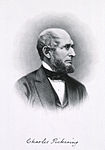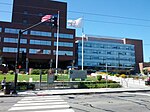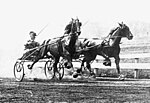Shady Hill School
1915 establishments in MassachusettsBuildings and structures in Cambridge, MassachusettsEducation in Cambridge, MassachusettsIndependent School LeaguePrivate elementary schools in Massachusetts ... and 2 more
Private middle schools in MassachusettsSchools in Middlesex County, Massachusetts
Shady Hill School is an independent, co-educational day school in Cambridge, Massachusetts. Founded in 1915, Shady Hill serves students in pre-kindergarten (called 'Beginners' by the school) through 8th grade. The school has an enrollment of approximately 500 students. Mark Stanek became the school's sixth director in 2010; he was a math teacher and a former Head of School at Ethical Culture Fieldston School in New York. Former Director Bruce Shaw stepped down in June 2010.
Excerpt from the Wikipedia article Shady Hill School (License: CC BY-SA 3.0, Authors).Shady Hill School
Coolidge Avenue, Cambridge
Geographical coordinates (GPS) Address Nearby Places Show on map
Geographical coordinates (GPS)
| Latitude | Longitude |
|---|---|
| N 42.371 ° | E -71.138 ° |
Address
Shady Hill School
Coolidge Avenue
02134 Cambridge
Massachusetts, United States
Open on Google Maps











